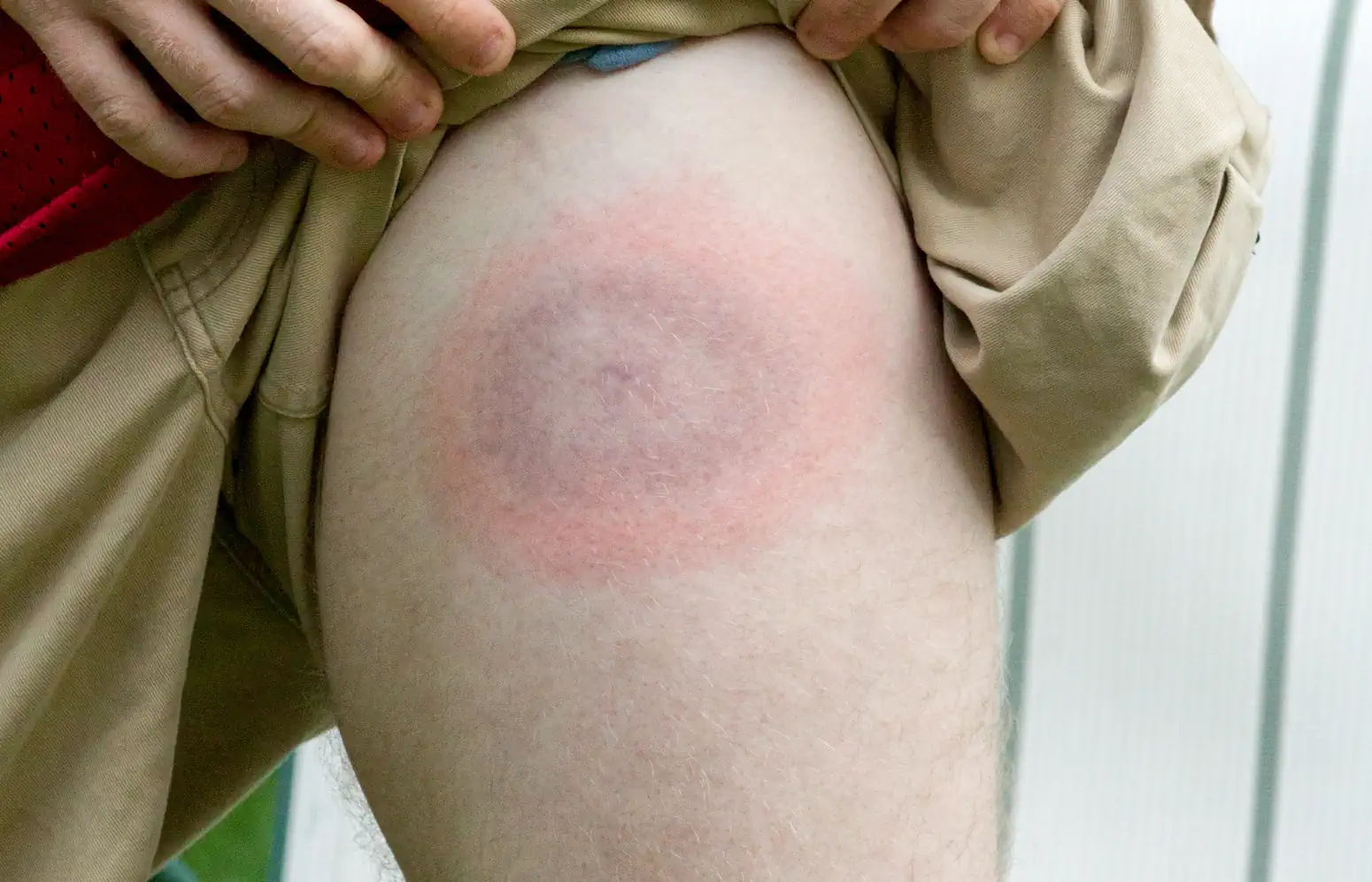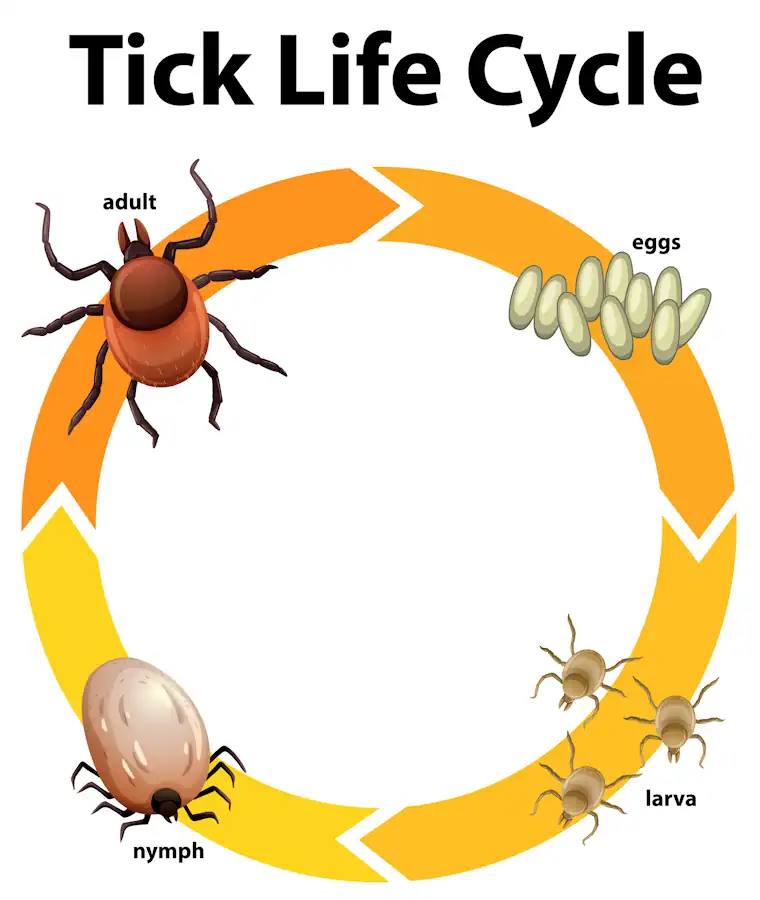- 1 (888) 843-5832
- info@dnaconnexions.com

Disclaimer: This guide is a research-based informational article. We are not doctors, and this content is not intended as medical advice. For personal health concerns, symptoms, or treatment, always consult a qualified healthcare provider.
Lyme disease is the most common tick-borne illness in the United States. It is caused by spiral-shaped bacteria called Borrelia burgdorferi and, less commonly, Borrelia mayonii. It is primarily transmitted through the bite of infected blacklegged ticks, also known as deer ticks. The infection can affect the skin, joints, heart, nervous system and more if not detected and treated promptly.
Lyme disease can be found in many countries around the world including the United States. According to the Centers for Disease Control (CDC), over 89,000 cases of Lyme disease were reported to the CDC by local US health departments in 2023. However, this number is believed to be much lower than the actual number of cases presented to healthcare providers which the CDC reports as 476,000 per year.
The official surveillance counts (the 89,000 number) are much lower because they include only cases that meet the CDC’s strict case definition and are reported by state health departments. Using this narrower reporting method, the U.S. documented 29,513 cases in 2017; 33,666 in 2018 (a 14.1 percent increase); 34,945 in 2019 (a 3.8 percent increase) and 89,000 cases in 2023 (during COVID years numbers were much lower because people stayed home). Both the high insurance-based estimate and the lower surveillance numbers tell the same story: Lyme disease is a persistent and increasing health concern in the U.S., though exact figures vary depending on the reporting method.

Europe also experiences a significant amount of Lyme disease, with an average of 128,888 cases annually. This is considered a greatly under reported number also due to different reporting systems in different regions.
Infected ticks have also been found in western Russia, Mongolia, Japan and northeastern China. Human infections in these areas are not high. Although, data from many of these regions is considered substantially underreported due to lack of awareness and the lack of diagnostic capabilities.
As you can see from the statistics, Lyme disease cases are rising each year in the United States. The rise in cases has been linked to multiple factors including climate change which is causing tick habitats to spread further north and to higher elevations. The growth in deer and rodent populations and urban expansion in previously undeveloped areas is also a factor. Increased awareness and improved diagnostics have also contributed to higher case detection, although underdiagnosis remains an issue in many countries.
Lyme disease is not evenly distributed across the map. Instead, it thrives in certain environments where ticks and their animal hosts can flourish. To understand why cases keep rising, it helps to look at the bigger picture of geography, ecology, and history.
In North America, the blacklegged tick (Ixodes scapularis) and the western blacklegged tick (Ixodes pacificus) are responsible for most human infections. Europe has another tick species, Ixodes ricinus, while northern Asia sees Ixodes persulcatus as the main carrier. These ticks occupy overlapping habitats of woodland, grassland, and even suburban yards.But ticks are only part of the story.
Ticks are arachnids. They are cousins to spiders, scorpions and mites. They live about 2 to 3 years and pass through four life stages: egg, larva, nymph, and adult. After the eggs hatch, the larva and nymph require blood meal to develop to the next life stage. When hatched, ticks are not infected with Lyme bacteria. Usually, they become infected when feeding on white-footed mice, chipmunks, or songbirds that serve as natural reservoirs. Once infected, the tick can carry the bacteria for the rest of its life and transmit it during subsequent feedings.

Nymphs play a large part in human transmission. They are very small, roughly the size of a poppy seed, and are active in late spring and summer when people spend more time outdoors. Because they are hard to detect, nymphs often remain attached long enough to transmit the bacteria (24-96 hours), making them responsible for the majority of human Lyme disease cases.
Adult ticks are larger, about the size of a sesame seed, and they also bite. But adult female blacklegged ticks need a large blood meal to lay eggs, so they frequently feed on deer although they can bite humans, pets or other large mammals.
Although ticks feed on deer, deer do not transmit Lyme disease to the ticks. The deer are primarily a food source for the ticks.
As human development expands into forested areas, people spend more time in environments where these tick-host interactions take place. Even suburban yards can harbor ticks if they border woods, support deer, or provide cover for rodents.
Not all environments support the tick populations needed to sustain Lyme disease, but where they do, several factors increase the likelihood of human exposure. Seasons play a role. Nymph activity peaks in warmer months and adult ticks remain active during mild winter days. Habitat is also important. Ticks thrive in wooded areas, brush, tall grasses, and leaf litter, but they can also survive in suburban yards and parks.
Wildlife density directly affects tick populations. High numbers of deer, mice, and certain bird species provide food for ticks and help maintain the bacteria within an ecosystem. Human activities such as gardening, hiking, camping, and outdoor work increase exposure risk, especially when protective measures are not used.
Although it is thought that Lyme disease has likely existed for centuries, it was only recognized as a distinct illness in 1975 when a group of children and adults that lived in Lyme, Connecticut, developed arthritis-like symptoms. A Circular Letter #12-32 distributed by the State of Connecticut, State Department of Health described the incident:
“In November 1975, several cases of arthritis in Lyme children were reported to the Connecticut State Department of Health. . . .Fifty-one residents (39 children and 12 adults) in Old Lyme, Lyme and East Haddam have had an apparently similar arthritis. It has been characterized by usually short and mild but often recurrent attacks of pain and swelling in a few large joints, especially knees, with longer intervening periods of no symptoms at all. No patients have had permanent injury to joints. Although almost half the patients had only joint symptoms, others had fever, headaches, weakness and a skin rash as well. One quarter of the patients had an unusual skin lesion before the onset of joint symptoms.”
This event prompted an investigation that led to the identification of a new tick-borne disease. In 1982, Dr. Willy Burgdorfer discovered the bacterial cause, Borrelia burgdorferi, within ticks collected from affected areas.
Since that time, similar illnesses have been identified in Europe and Asia, each linked to related Borrelia species. This discovery shifted the understanding of Lyme disease from a local health concern to a global issue requiring international research and prevention strategies.
Despite decades of study, myths about Lyme disease continue to influence public understanding and personal decision-making. Common misconceptions include:
Myth: Ticks are only a problem in rural areas.
Fact: In reality, significant tick populations exist in suburban neighborhoods and city parks.
Myth: All ticks carry Lyme disease.
Fact: Only certain Ixodes species are capable of transmitting Lyme, and infection rates vary by region.
Myth: A bull’s-eye rash appears in every case of Lyme disease.
Fact: A large number of people don’t get a rash or never notice a rash.
Myth: You are safe from getting Lyme disease in winter.
Fact: Adult ticks can remain active in winter while temperatures are above freezing.
Myth: Quick tick removal eliminates all risk.
Fact: While early removal does reduce the likelihood of infection, research shows that transmission can occur in less than 24 hours in some cases (Eisen, 2018).
Coming Up
In Part II we’ll be discussing how Lyme disease spreads and more.